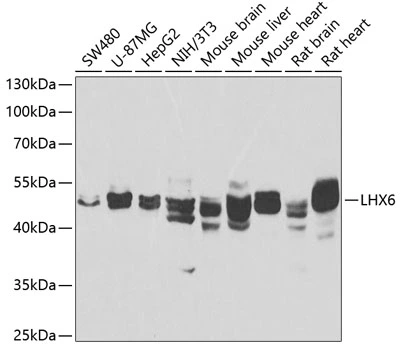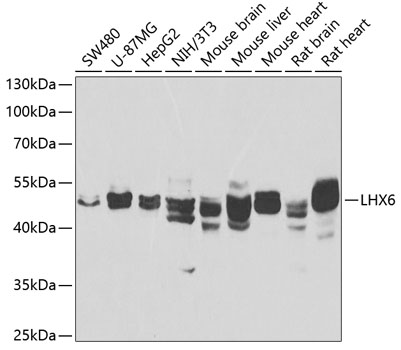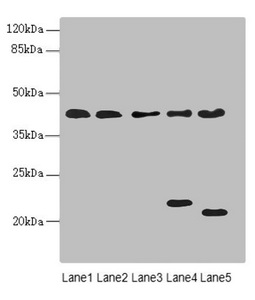
WB analysis of various sample lysates using GTX55690 LHX6 antibody. The signal was developed with ECL plus-Enhanced. Dilution : 1:1000 Loading : 25microg per lane
LHX6 antibody
GTX55690
ApplicationsWestern Blot
Product group Antibodies
ReactivityHuman, Mouse, Rat
TargetLHX6
Overview
- SupplierGeneTex
- Product NameLHX6 antibody
- Delivery Days Customer9
- Application Supplier NoteWB: 1:500 - 1:2000. *Optimal dilutions/concentrations should be determined by the researcher.Not tested in other applications.
- ApplicationsWestern Blot
- CertificationResearch Use Only
- ClonalityPolyclonal
- ConjugateUnconjugated
- Gene ID26468
- Target nameLHX6
- Target descriptionLIM homeobox 6
- Target synonymsLHX6.1, hLHX6, LIM/homeobox protein Lhx6, LIM homeodomain protein 6.1, LIM/homeobox protein Lhx6.1
- HostRabbit
- IsotypeIgG
- Protein IDQ9UPM6
- Protein NameLIM/homeobox protein Lhx6
- Scientific DescriptionThis gene encodes a member of a large protein family that contains the LIM domain, a unique cysteine-rich zinc-binding domain. The encoded protein has tandem LIM domains as well as a DNA-binding homeodomain. The protein functions as a transcription factor involved in embryogenesis and head development and is highly expressed in neural crest derived mesenchyme cells. Alternative splicing results in multiple transcript variants encoding distinct isoforms. [provided by RefSeq, Jan 2017]
- ReactivityHuman, Mouse, Rat
- Storage Instruction-20°C or -80°C,2°C to 8°C
- UNSPSC12352203
References
- Wang L, Zhou Y, Cao C, et al. The exon 12-containing LHX6 isoforms promote cervical cancer cell proliferation by regulating the MAPK signaling pathway. Cancer Med. 2022,11(19):3657-3673. doi: 10.1002/cam4.4734Read this paper





